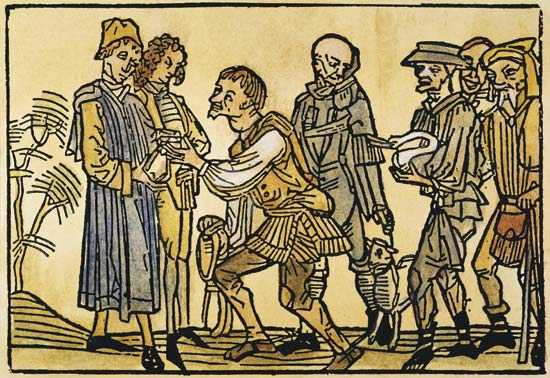This is the third part in a series on how to read Alexis de Tocqueville’s Democracy in America. Read the introduction and follow the entire series here.
Prior to delving into the text of Alexis Tocqueville’s Democracy in America, it behooves us to get some historical context so that we can understand his observations, analyses, and conclusions. Context also helps us grasp the significance of Tocqueville’s project, allowing us to see through his eyes.
Think about historical context like you might think about seeing a movie or reading a novel. When you’re following a story as it plays out, the context serves to situate your perspective within the story so you can understand it and follow it as it unfolds.
Recall that Tocqueville visited America between May 1831 and February 1832. Recall also that Tocqueville was born in 1805, and was in his mid-twenties when he made his journey. Finally, recall that he finished volume one in 1835 and volume two in 1840. In the next few posts, we’ll consider some salient contextual features of Democracy in America so that our perspective on the work can be centered. Tocqueville’s book—and Tocqueville as a person—will mean much more to us once our perspective is situated appropriately.
Let’s begin with a brief consideration of feudalism. When Tocqueville and Beaumont came to America, feudalism as a set of social, economic, political, religious, and military structures was largely swept away by various dynamics occurring over several centuries, such as the centralization of the military, the creation of the nation-states, the Protestant Reformation, the rise of the middle class, and the globalization of the colonial system. But many feudal assumptions, such as those pertaining to class, were still prominent. Tocqueville was, after all, part of the aristocracy — even after the revolutionary cataclysms occurring in France between 1789 and 1830.
When Tocqueville came to America, he was struck by the absence of aristocracy and the prevalence of equality of condition (at least in the free states of the North). He was amazed by the absence of feudal structures — but also of the absence of the feudal mindset, particularly that of being tied down to the land. Americans were in constant movement, he observed, always in search of new lands and the attending promise of new wealth and prosperity.
The feudal system prevailed in Europe, generally from the death of Charlemagne until the end of the Hundred Years’ War. But its origins can be traced to the fall of the Western Roman Empire at the end of the fifth century through very late in the modern period. Its real demise in Europe could be placed around the end of the First World War in 1918, but this is debatable. An argument could be made that feudal attitudes still exist in the UK, where hereditary title remains today.
In its predominance, feudalism was a class system of mutual responsibilities centered on land, which served as the principal source of wealth. These mutual responsibilities were sustained between lords and vassals by the honor code known as chivalry.
The manor (also known as the feudum, fief, or benefice) was the basis of medieval society and economy. A lord was the bestower of land and the vassal was its recipient. Lords and vassals entered into formal contracts with one another. The vassal promised to give aid and counsel (military and administrative duties) and the lord was responsible to provide protection and justice to his vassals. Serfs, those who worked the land, owed their lords a tithe of their produce in return for the privilege of living on and working a parcel of land, as well as protection.
You can envision the feudal class system as a pyramid. At the top was the king. Under the king were the king’s chief vassals: dukes, viscounts, counts, marquesses, etc. Under those were the rear vassals. These steps of the nobility would proceed down through aristocrats, who possessed title but not land. Serfs were at the bottom of the pyramid, and they comprised most of the population. They worked the land or provided goods or services on the manor.
The Church also possessed its own feudal hierarchy parallel to that of the secular nobility. Land was also the basis of wealth for the church during this period. The feudal system was predominant for many centuries, primarily because the whole system was hereditary. While only the king could strictly be said to formally own land, those who possessed the land, as members of either the secular or ecclesial nobility, possessed it through hereditary title and passed it down generation after generation through the practice of primogeniture — a practice that Tocqueville was surprised did not exist in America like it did in France.
This brief summary of feudalism is, alas, generalized and simplified. It often operated in much more complex ways over time. But broadly speaking, these were some of the hallmarks of feudal assumptions, and Tocqueville was a product of those assumptions, which were exceedingly old. These assumptions were held in common by virtually all European people groups until comparatively recently in Tocqueville’s time. So when he encountered equality of condition in America, he was astounded and fascinated to see its effects. That fascination comes through in almost every page of Democracy in America.
In the next installment, we will consider the demise of feudalism and the Revolution of 1789. While Tocqueville was not yet alive to see those tumultuous times, his family suffered greatly, and that suffering formed many of Tocqueville’s attitudes toward revolution.
